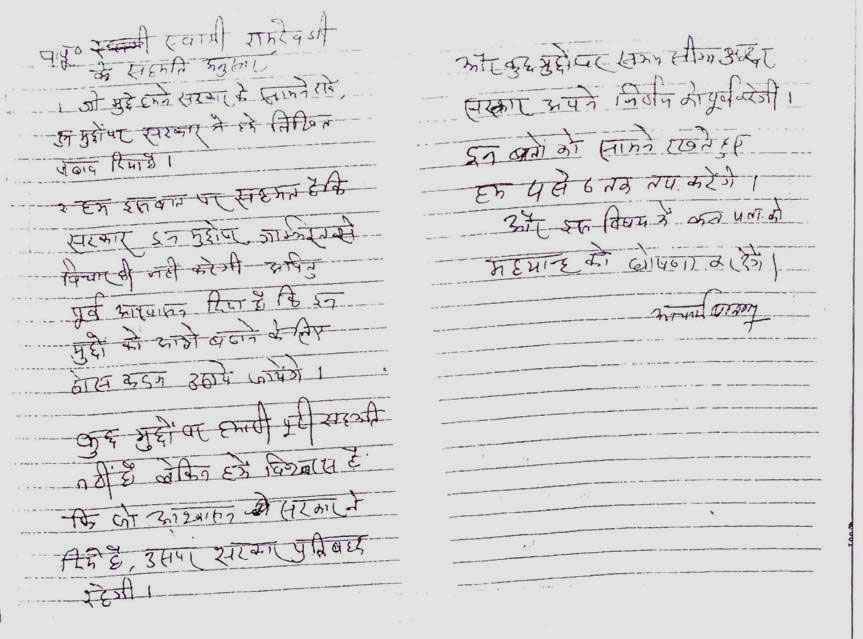This post is about a piece of news that’s more than a year old, but I am posting it now because 1. Linguistrix didn’t exist back then, and 2. the post is relevant in light of my recent post on India’s linguistic plurality.
This comes from the days when the Jan Lokpal Movement was in full swing and there were talks and discussions between Team Anna and the government on an almost daily basis.
In came this news—
Ramdev’s Hindi letter exposed Union ministers’ linguistic skills
When a cabinet committee sat to discuss his deal to end fast, it found no minister could read the letter
After a team of Central ministers returned from Claridges Hotel in Delhi after negotiating with Baba Ramdev for five hour on 3 June, they handed over a document signed by Acharya Balkrishna to finance minister Pranab Mukherjee, which was to be discussed at the Cabinet Committee on Political Affairs (CCPA) later that day.
To the horror of Mukherjee, nobody at the CCPA could read the document, which was a handwritten note in Hindi. The CCPA was called to discus the political course on Ramdev’s fast at the Ramlila Maidan.
Here’s the letter that none of the ministers present could read:

The media made a minor hue and cry about the issue of Union ministers having such poor linguistic skills. Now, if you have been a regular reader of Linguistrix, you’d have noticed that I have often bemoaned (in rather unequivocal terms) the lack of even elementary linguistics knowledge in most of the world’s educated masses. Linguistic ignorance manifests itself in many ways and in many occasions, but this is definitely not one of them.
Let’s have a look at the members of the committee that had to face the ignominy of not knowing how to read this barely legible Hindi scrawl, and look at their mother tongues:
- Pranab Mukherjee―Bengali
- P Chidambaram―Tamil
- A K Antony―Malayalam
- S M Krishna―Kannada
- Manmohan Singh―Punjabi/Urdu (He was born in the village Gah, now part of Pakistan. From what I have read, the speeches he gives in Hindi are actually written down in the Urdu script because he is much more fluent in that script)
Talk of diversity!
A couple of posts ago, in I discussed how there was no easy solution to the problems that India’s linguistic plurality causes, and how those who make it a fight against English are to some extent scapegoating it. Here, you have an example of someone communicating in a language that is NOT English, that is perfectly Indian, that is considered by many to be the Indian language closest to being universal in the country, with the result that no one understands him.
Most of the ministers in that list can probably converse comfortably in Hindi, and I do not see why they should be expected to read handwritten Hindi. I am sure they are all literate in their respective mother tongues, be it Kannada or Tamil or whatever. After all, wasn’t that the point of India’s linguistic diversity?
As for the letter, My God, heaven knows it’s illegible. I can read Hindi perfectly fluently and I still had to pause at quite a few places to figure out what the hell it said. If this were a handwriting test, it would have barely gotten passing marks. As someone who has put in plenty of effort into learning scripts, I can attest that reading someone else’s handwriting in a script that you are not very comfortable with can be very very difficult. You need to have had a lot of practice reading and writing a particular script before you can read handwritten stuff fluently. And when it’s written in such an indecipherable scrawl, you will probably need a fair bit of context too before you can extract meaning out of it.
I keep saying that while English may have had received favorable treatment post India’s independence, it ultimately just fills in the job description of a language that can be used by people from various states to communicate with each other. Good luck finding a common Indian language for India without setting the country on fire.
